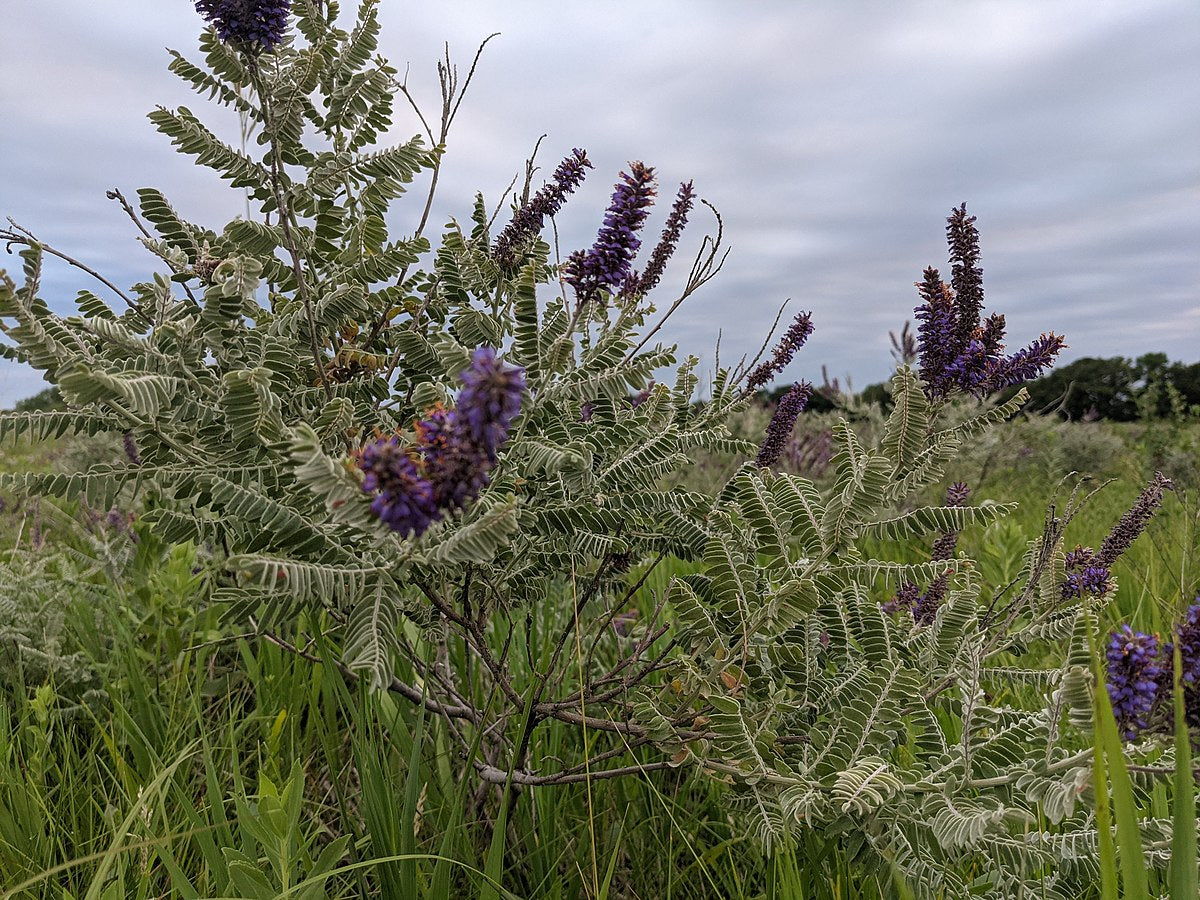stellarnatives
Amorpha canescens 'Lead Plant'
Amorpha canescens 'Lead Plant'
Couldn't load pickup availability
Amorpha canescens, also known as Lead Plant, gets its nickname from the grayish-white, lead-like appearance of its leaves and stems, which gives the plant a very distinctive look. The grayish-white coloration is caused by a dense covering of fine, white hairs on the leaves and stems, which helps to reflect sunlight and reduce water loss. This adaptation makes the plant well-suited to growing in hot, dry, and sunny conditions.
Amorpha canescens is a perennial shrub native to the central and western parts of North America. It typically grows to be 2-3 feet tall and wide. The leaves are green and feathery and are composed of many small leaflets. In the spring, the plant produces small, violet-purple, pea-like flowers. The flowers are typically 1/4 inch long and 1/8 inch wide, and are arranged in dense, spike-like clusters that are up to 6 inches long. Each flower has a distinctive, elongated, two-lobed upper petal, and two small, inconspicuous lower petals. The flowers are hermaphrodite, which means they have both male and female reproductive organs, and are pollinated by bees, butterflies, and other insects.
The blooming period is typically from late spring to early summer, usually for about 2-3 weeks. The plant is drought-tolerant and can grow in a variety of soil types, including sandy or rocky soil, and can also tolerate some degree of alkalinity. It prefers well-drained soil and full sun. The plant is known for its ability to fix nitrogen in the soil, which makes it a good option for planting in poor soils.
Photo attribution:
Lucas NoBigDeal, CC BY-SA 4.0 <https://creativecommons.org/licenses/by-sa/4.0>, via Wikimedia Commons
Materials
Materials
Shipping & Returns
Shipping & Returns
Dimensions
Dimensions
Care Instructions
Care Instructions


